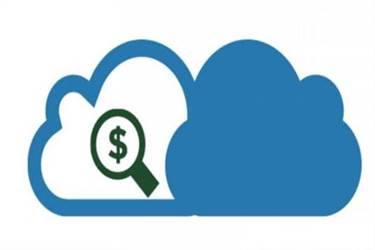Stages Of Team Growth Introduction To Enterprise
The team decides that the coaching ought to focus on asking participants questions as an alternative of lecturing them. The hospital CEO asks Chris to create a group to handle this problem. The objective is to increase employees participation within the hospital’s annual security coaching program. No matter what sort of staff you’re forming, you probably shouldn’t count on its members to instantly bond and quickly attain the level of a high-performing team. During the Ending Stage, some team members could become less focussed on the staff’s duties and their productiveness might drop. Alternatively, some group members may find focussing on the duty at hand is an effective response to their unhappiness or sense of loss.
- If you haven’t already, consider making a RACI chart to let every staff member know who’s accountable, accountable, contributing, and informed for a selected initiative.
- Team members help one another and dynamically modify roles and duties based on the changing wants of the group.
- Pose plenty of inquiries to your group, even when you assume you realize the reply.
- If they didn’t, she asks them to truthfully describe why they selected not to attend.
- Take the time to replicate in your achievements and remind your staff why they’re doing what they do.
- At this level Rina just desires to get the project shifting once more.
Given these conflicting emotions, particular person and team morale could rise or fall all through the ending stage. It is very likely that at any given moment individuals on the team might be experiencing completely different feelings concerning the group’s ending. As the staff begins to maneuver in the direction of its objectives, members discover that the team cannot stay https://www.globalcloudteam.com/ as much as all of their early excitement and expectations. Their focus may shift from the duties at hand to emotions of frustration or anger with the staff’s progress or process. Members could express concerns about being unable to satisfy the team’s targets. During the Storming stage, members are attempting to see how the team will respond to differences and how it will deal with battle.
During the Storming stage, team members could argue or turn into important of the staff’s authentic mission or objectives. A strong staff chief is the backbone of every high-performing team. Without strong leadership, teams could battle reaching the performing stage. By growing your individual management abilities, you possibly can mannequin collaboration best practices and help your team attain their fullest potential.
Transitioning From One Stage To The Following
Team members are unfamiliar with the groups duties and so they rely heavily on the group leader for guidance and path. Managers and project leads need to maintain their eyes open, however be principally hands-off so the staff can construct muscle round working independently. Remove obstacles by coordinating tightly with adjacent and upstream teams.
With a structured method, you can improve your team’s efficiency at every stage of growth. The meeting begins with introductions and an outline of the team’s function – to increase staff participation in the hospital’s annual safety coaching program. The fifth stage of group improvement, also known as the mourning stage, is the ultimate stage a group will undergo. After a project is over or if a group is disbanded, group members who worked together will go right into a small mourning period. Group members may have a tough time working with other groups as they had sturdy group dynamics with their earlier group. Team members are able to prevent or clear up issues in the staff’s process or in the staff’s progress.
During the Forming stage of group growth, team members are usually excited to be part of the team and keen about the work ahead. Members typically have excessive positive expectations for the group experience. At the identical time, they may also feel some anxiousness, questioning how they may slot in to the staff and if their performance will measure up. Each stage of group growth has its personal recognizable feelings and behaviors; understanding why things are occurring in sure ways in your staff could be an necessary a part of the self-evaluation course of. Team effectiveness is enhanced by a staff’s commitment to reflection and on-going analysis. In addition to evaluating accomplishments by method of meeting specific targets, for groups to be high-performing it’s important for them to understand their improvement as a team.

The first step in a team’s life is bringing collectively a gaggle of individuals. Individuals concentrate on defining and assigning duties, establishing a schedule, organizing the team’s work, and different start-up issues. In addition to focusing on the scope of the team’s purpose and means of approaching it, people in the formation stage are also gathering impressions and information about each other. Since people usually wish to be accepted by others, throughout this period they often keep away from battle and disagreement. Team members could start to work on their duties independently, not but focused on their relationships with fellow team members.
As they grow more snug working collectively, team members are extra snug asking for help completing a task or getting constructive suggestions. Your group starts to increase their productiveness at this stage as they turn out to be extra acquainted with their teammates and their working styles. Boost motivation by serving to your staff perceive why their work matters. In this free ebook, learn to create a shared sense of function on your team. The preliminary stage is normally marked by a mixture of attitudes and emotions. Some members shall be excited and optimistic about joining, while others will be anxious or maybe skeptical about their roles.
Choose Studying Topic
They decide how communication ought to happen between meetings. Chris emphasizes the importance of attendance and that every member’s input is significant. Each particular stages of team development person agrees to serve on the staff and the initial meeting is set. Here’s an example of the 4 levels as they played out at a big public hospital.

During this section of team building, responsibilities are clearly defined and the team begins to map out a plan to realize its goals. The team’s leader is more engaged in staff constructing at this stage to ensure everyone understands the plan. If the team’s goals are not aligned, there may be mistakes and missed alternatives. High-performing teams undergo 4 outlined phases to succeed in their potential.
Levels Of Team Development
They may be feeling some nervousness because of uncertainty about their particular person role or future responsibilities. They may really feel disappointment or a sense of loss in regards to the modifications coming to their staff relationships. And on the identical time, group members may really feel a way of deep satisfaction at the accomplishments of the team. Individual members might really feel all of these items on the identical time, or might cycle by way of emotions of loss adopted by emotions of satisfaction.
The forming-storming-norming-performing cycle repeats more often than you may think. I avoid them if I can.” All staff members voice agreement about their reluctance to attend safety coaching. Chris feels a way of camaraderie as group members unite around a typical concern.

There might be more frequent and extra significant communication amongst team members, and an increased willingness to share ideas or ask teammates for assist. Team members refocus on established staff groundrules and practices and return their focus to the group’s duties. Teams could start to develop their very own language (nicknames) or inside jokes. Draw a easy four-stage diagram and ask every individual to position a dot or sticky notice next to the stage they think the team is at. The transition between these varied stages requires intentional guidance and facilitation by the group leader. Within a high-performing staff, there’s an appreciation of the necessity for a steadiness of communication types, and of balancing the intuitive and logical mind.
The logical mind helps individuals remedy issues and keep on task. The intuitive mind allows individuals to determine what they’re feeling. Often the logical thoughts works inside defined biases or different constraints. Intuition recognizes alerts outside of the logical filters. Should a conflict ever arise, your team may even know what steps to take to get this conflict resolved.
However, generally, the chief is extra involved with delegating and overseeing the process throughout this stage. Note that teams can lapse again into earlier phases when adjustments occur with personnel or the project itself. Ideally, the tip of this part is the profitable completion of the project.
Pose lots of inquiries to your team, even should you suppose you realize the answer. Take a cue from the Atlassian Team Playbook and make time for these three actions. Click the name of every activity under to get step-by-step instructions and different useful assets like templates and movies. There’s a model new initiative to run at and you’re keen to get began.
Interested In Studying More? Contact Us Today!
About 10 years after Tuckman created his original 4-stage model, he then added a fifth stage, which is Adjourning. More typically within the corporate world, cross-functional teams shall be shaped for a project and then dispersed at the end of the project. Whether you’re building a model new team or working on a specific project with cross-functional partners, it’s important to establish your team’s mission early on. Setting a aim, even earlier than you begin working together, establishes some ground rules to give attention to and ensures that everybody is on the identical web page and transferring in direction of the identical objective.
To grow from this stage to the following, every member should relinquish the comfort of non-threatening subjects and risk the potential of battle. During the Norming stage of group development, group members begin to resolve the discrepancy they felt between their individual expectations and the truth of the staff’s expertise. If the staff is successful in setting extra flexible and inclusive norms and expectations, members should experience an elevated sense of consolation in expressing their “actual” concepts and feelings. Team members feel an rising acceptance of others on the staff, recognizing that the number of opinions and experiences makes the team stronger and its product richer. Members begin to really feel a half of a staff and might take pleasure from the increased group cohesion. Successfully transferring through the storming stage implies that a team has clarified its objective and its technique for achieving its objectives.
